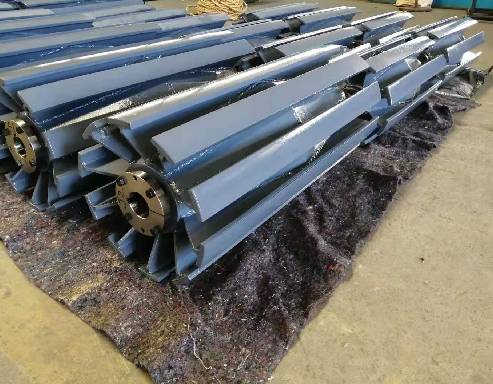 Afrikaans
Afrikaans  Albanian
Albanian  Amharic
Amharic  Arabic
Arabic  Armenian
Armenian  Azerbaijani
Azerbaijani  Basque
Basque  Belarusian
Belarusian  Bengali
Bengali  Bosnian
Bosnian  Bulgarian
Bulgarian  Catalan
Catalan  Cebuano
Cebuano  Corsican
Corsican  Croatian
Croatian  Czech
Czech  Danish
Danish  Dutch
Dutch  English
English  Esperanto
Esperanto  Estonian
Estonian  Finnish
Finnish  French
French  Frisian
Frisian  Galician
Galician  Georgian
Georgian  German
German  Greek
Greek  Gujarati
Gujarati  Haitian Creole
Haitian Creole  hausa
hausa  hawaiian
hawaiian  Hebrew
Hebrew  Hindi
Hindi  Miao
Miao  Hungarian
Hungarian  Icelandic
Icelandic  igbo
igbo  Indonesian
Indonesian  irish
irish  Italian
Italian  Japanese
Japanese  Javanese
Javanese  Kannada
Kannada  kazakh
kazakh  Khmer
Khmer  Rwandese
Rwandese  Korean
Korean  Kurdish
Kurdish  Kyrgyz
Kyrgyz  Lao
Lao  Latin
Latin  Latvian
Latvian  Lithuanian
Lithuanian  Luxembourgish
Luxembourgish  Macedonian
Macedonian  Malgashi
Malgashi  Malay
Malay  Malayalam
Malayalam  Maltese
Maltese  Maori
Maori  Marathi
Marathi  Mongolian
Mongolian  Myanmar
Myanmar  Nepali
Nepali  Norwegian
Norwegian  Norwegian
Norwegian  Occitan
Occitan  Pashto
Pashto  Persian
Persian  Polish
Polish  Portuguese
Portuguese  Punjabi
Punjabi  Romanian
Romanian  Russian
Russian  Samoan
Samoan  Scottish Gaelic
Scottish Gaelic  Serbian
Serbian  Sesotho
Sesotho  Shona
Shona  Sindhi
Sindhi  Sinhala
Sinhala  Slovak
Slovak  Slovenian
Slovenian  Somali
Somali  Spanish
Spanish  Sundanese
Sundanese  Swahili
Swahili  Swedish
Swedish  Tagalog
Tagalog  Tajik
Tajik  Tamil
Tamil  Tatar
Tatar  Telugu
Telugu  Thai
Thai  Turkish
Turkish  Turkmen
Turkmen  Ukrainian
Ukrainian  Urdu
Urdu  Uighur
Uighur  Uzbek
Uzbek  Vietnamese
Vietnamese  Welsh
Welsh  Bantu
Bantu  Yiddish
Yiddish  Yoruba
Yoruba  Zulu
Zulu Ceramic Coated Conveyor Pulley with Enhanced Lagging for Improved Performance and Durability
The Advantages of Ceramic Lagging on Conveyor Pulleys
In the world of material handling, conveyor systems play a crucial role in ensuring that operations run smoothly and efficiently. One of the vital components of these systems is the conveyor pulley, which is essential for the movement and direction control of the conveyor belt. The longevity and performance of the conveyor system can greatly depend on the materials used for the pulleys, particularly in relation to wear resistance and traction. Recently, there has been a growing trend toward the use of ceramic lagging on conveyor pulleys, and this article will explore the numerous advantages it offers.
Enhanced Durability
One of the primary benefits of ceramic lagging is its exceptional durability. Traditional rubber lagging materials may wear out quickly, especially in high-impact and abrasive environments. Ceramic lagging, on the other hand, is engineered to withstand extreme conditions – from heavy loads to abrasive materials. The ceramic tiles used in lagging are often hard and resistant to wear, which significantly reduces the frequency of replacement and maintenance schedules, ultimately leading to lower operational costs.
Improved Traction
Ceramic lagging provides superior traction compared to standard rubber lagging. The rough surfaces of ceramic tiles enhance the friction between the pulley and the conveyor belt, reducing slippage and improving overall efficiency. This increased grip is particularly beneficial in applications where the material being transported is heavy or has a tendency to slide, such as in mining or construction operations. By minimizing slippage, ceramic lagging ensures that the conveyed materials remain in place, reducing waste and improving throughput.
Heat Resistance and Chemical Inertness
In many industrial applications, conveyor systems may be exposed to high temperatures or harsh chemicals. Ceramic lagging exhibits a high degree of heat resistance, allowing it to maintain its integrity under extreme conditions that may degrade other materials. Additionally, ceramic is chemically inert, meaning it does not react with the substances it comes into contact with. This property is crucial in industries such as food processing or pharmaceuticals, where contamination is a significant concern. The use of ceramic lagging can help ensure compliance with health and safety regulations by preventing contamination from the lagging material.
ceramic lagging conveyor pulley

Reduced Noise Levels
Another noteworthy advantage of ceramic lagging is its ability to minimize noise levels during operation. The hard surface of ceramic tiles can absorb and dissipate vibrations more effectively than traditional rubber, resulting in a quieter working environment. This is not only beneficial for worker comfort but can also help companies comply with local noise ordinances and improve overall workplace safety.
Environmental Benefits
In the era of environmental awareness, the sustainability of materials used in industrial applications is gaining prominence. Ceramic lagging can be a more environmentally friendly choice, as it often lasts longer than traditional lagging materials, leading to less frequent replacements. Furthermore, many ceramic materials are produced from natural resources and can often be sourced sustainably, contributing to a more eco-friendly operation.
Installation and Maintenance Considerations
While the advantages of ceramic lagging are compelling, it's important to consider the installation process. The installation of ceramic lagging may require specialized equipment and expertise. Companies should consult with professionals to ensure proper installation to maximize the benefits. Additionally, while ceramic lagging is durable, it is vital to inspect and maintain the conveyor system regularly to ensure all components, including the lagging, continue to function effectively.
In conclusion, the implementation of ceramic lagging on conveyor pulleys presents significant benefits that can enhance the performance and longevity of conveyor systems. With its durability, improved traction, resistance to heat and chemicals, reduced noise levels, and environmental advantages, ceramic lagging is becoming an increasingly attractive option for industries looking to optimize their operations. As technology continues to evolve, the adoption of innovative materials like ceramic in conveyor systems will likely play a pivotal role in the future of material handling equipment.
-
Revolutionizing Conveyor Reliability with Advanced Rubber Lagging PulleysNewsJul.22,2025
-
Powering Precision and Durability with Expert Manufacturers of Conveyor ComponentsNewsJul.22,2025
-
Optimizing Conveyor Systems with Advanced Conveyor AccessoriesNewsJul.22,2025
-
Maximize Conveyor Efficiency with Quality Conveyor Idler PulleysNewsJul.22,2025
-
Future-Proof Your Conveyor System with High-Performance Polyurethane RollerNewsJul.22,2025
-
Driving Efficiency Forward with Quality Idlers and RollersNewsJul.22,2025





























